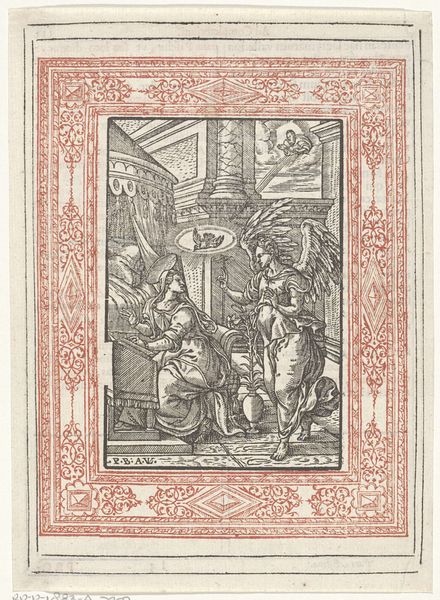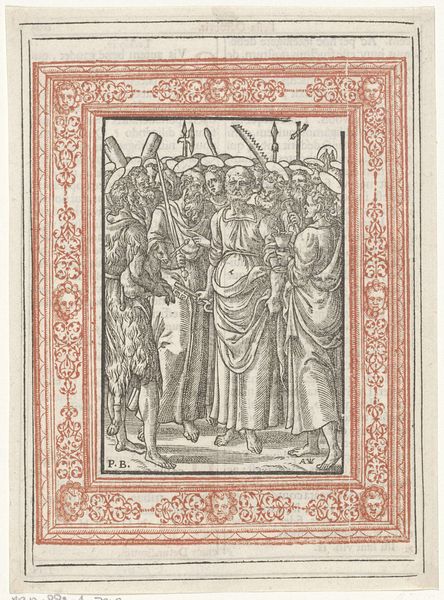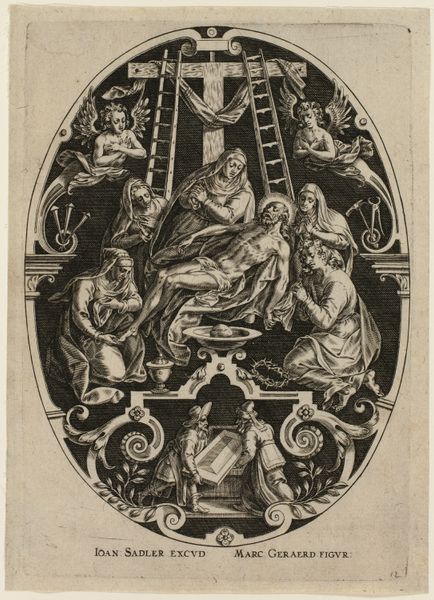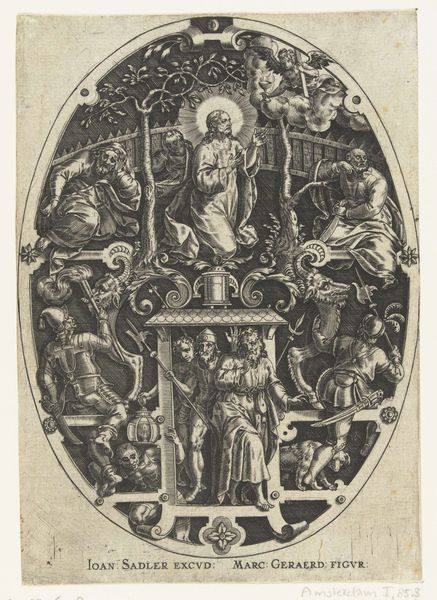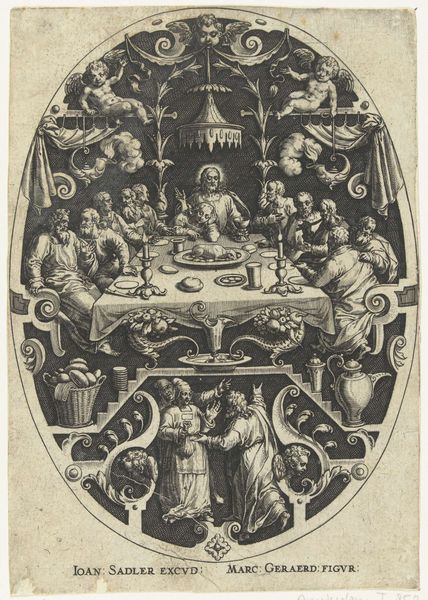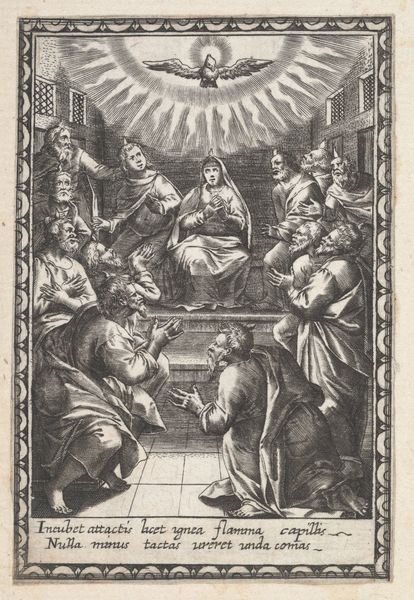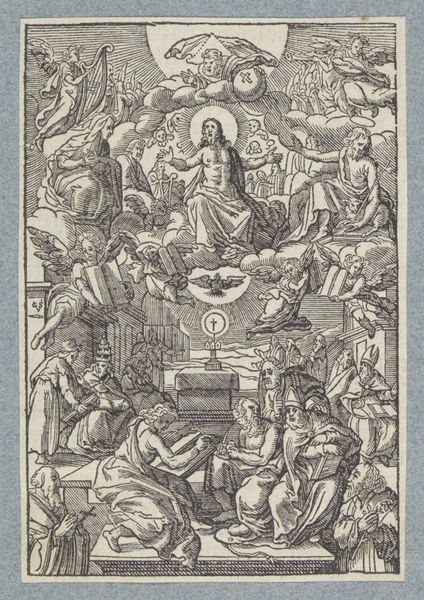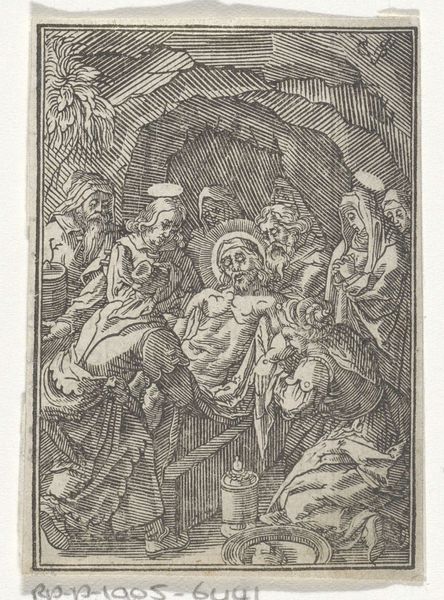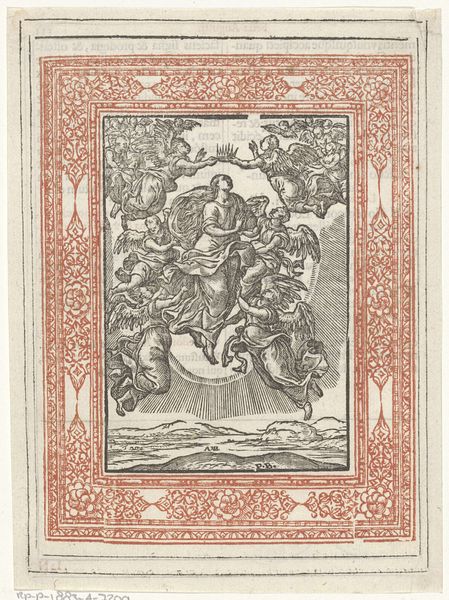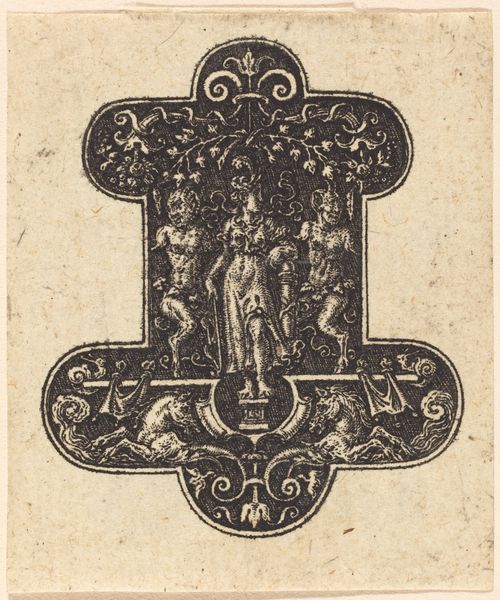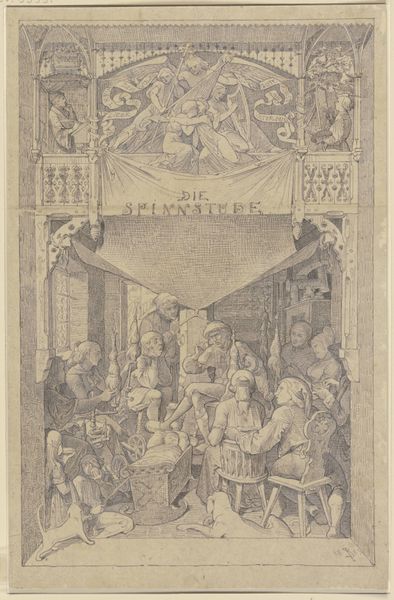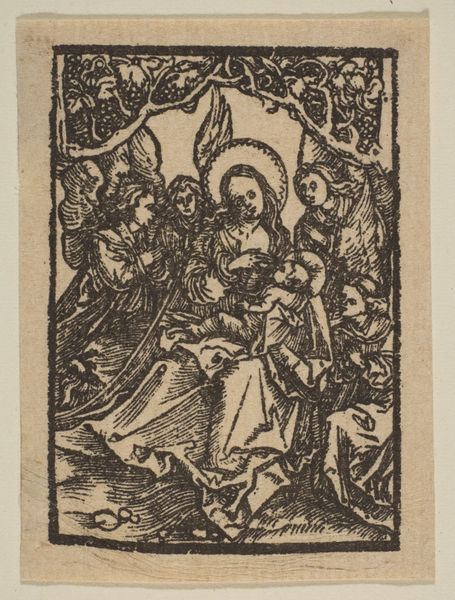
print, engraving
# print
#
figuration
#
11_renaissance
#
line
#
history-painting
#
engraving
Dimensions: height 184 mm, width 135 mm
Copyright: Rijks Museum: Open Domain
Curator: Let's look at this print, "Laatste Avondmaal," or "Last Supper," made sometime between 1574 and 1632 by Antoni van Leest. It's an engraving rendered in delicate lines. What catches your eye first? Editor: The claustrophobia, actually. The figures are so tightly packed, pressed into this shallow space like sardines, that I get a feeling of almost unbearable tension. It’s exacerbated by the rigid lines. Curator: Interesting. The compressed composition definitely amplifies the emotional intensity. We're seeing this scene mediated through the techniques of engraving—the lines, the plate, the printing press. These processes dictate not just what’s depicted, but how the message is disseminated and who has access to it. It changes the context for production of religious imagery significantly. Editor: Yes, the materiality speaks volumes about its cultural purpose. It’s an engraving, making it infinitely reproducible. Consider what those lines represent. The halo above Christ—it doesn't just indicate divinity; it marks him with specific religious authority within a familiar, established iconography. Curator: And we have to remember, the materials weren’t neutral! Consider what those lines entail! Someone etched them, likely an apprentice repeating patterns until reaching mastery. They had social lives that involved tools and knowledge of material as it changes over time in Renaissance Europe, when these depictions of the Last Supper are reaching a fever pitch. Editor: Absolutely, especially with how prominently they placed Christ alongside John the Apostle—their proximity a well-worn visual shorthand. It is striking though, the ways that gesture, light, and shadow are simplified for reproducibility. Curator: Exactly! This engraving, with all its symbolic weight, could be purchased, displayed, owned by people far from the church’s direct control. And that matters. Editor: Reflecting on the print now, I appreciate how it both conveys profound emotion and participates in material and socio-political discourse through its style. It seems almost…inevitable, this collision of the spiritual and the tangible. Curator: Indeed. Examining "Laatste Avondmaal" allows us to see art history as less about single artistic geniuses and more about material, the making and receiving processes—and these determine how information, including visual iconography, comes to be known and believed by large groups of people over time.
Comments
No comments
Be the first to comment and join the conversation on the ultimate creative platform.
